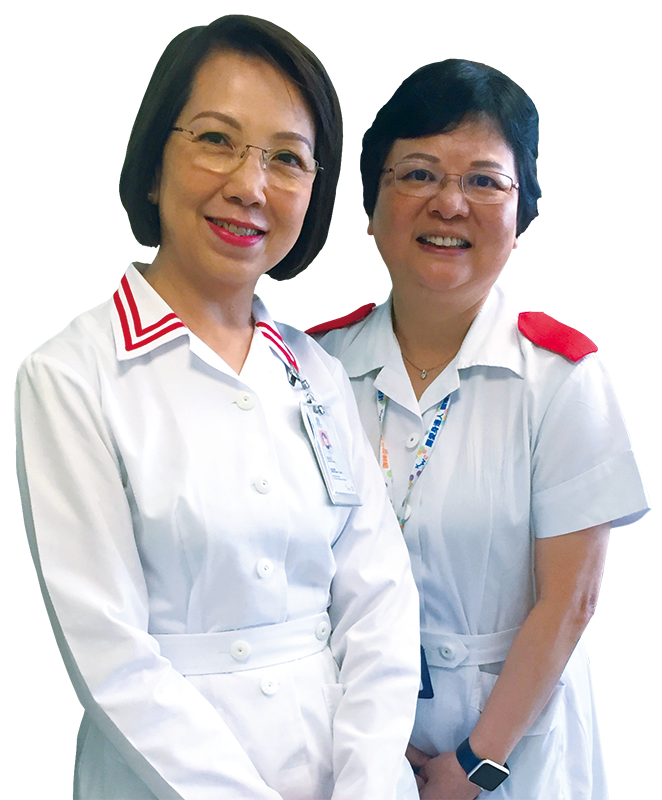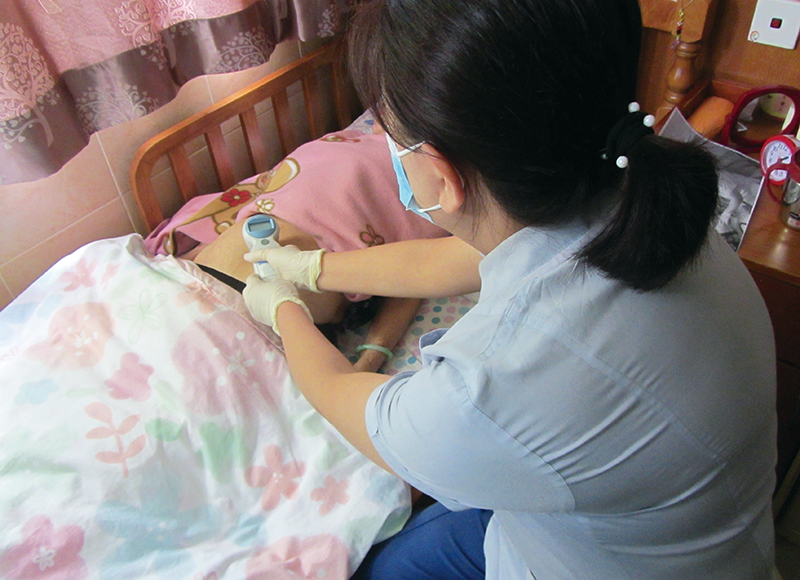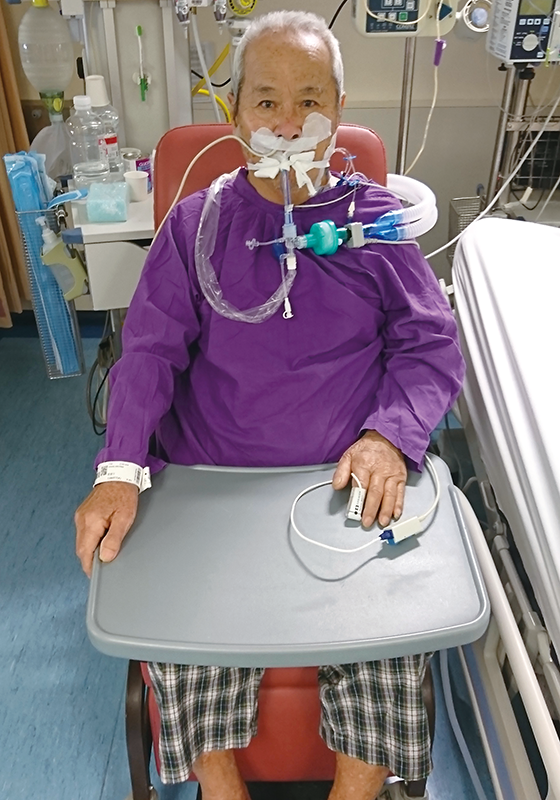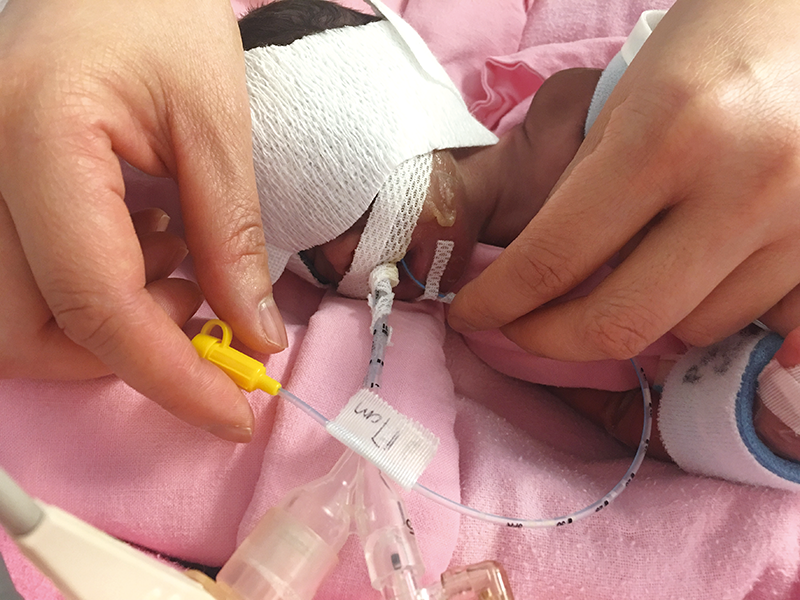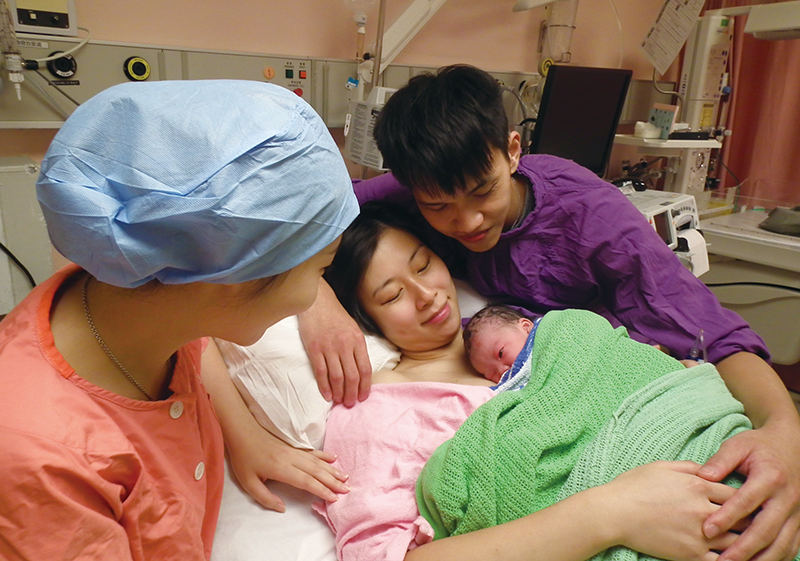Small changes in ward improve patient care
Princess Margaret Hospital (PMH) has implemented the ‘Nursing Research Evidence-based Practice’ Project since 2010. Involving 15 specialties, nursing colleagues of each specialty propose a potential improvement area on current services, review relevant literature, integrate the summary of findings, and apply new practices to local clinical cases. The result of the projects is presented at the Nursing Symposium held in May every year. This year, nurse consultants from Caritas Medical Centre and Yan Chai Hospital also took part in the project to learn from the successful experiences and spread the virtue of self-evaluation and continuous quality improvement.
The project has now accumulated hundreds of successful cases. Let’s explore four selected cases with Annie Chan, Cluster General Manager (Nursing) of Kowloon West Cluster and Ho Lai-fong, Midwife Consultant of PMH.
Community Nursing Service
Remove urinary catheter at patient’s home to reduce hassles of commuting
In the past, patients with acute retention of urine had to return to hospital for the removal of urinary catheter. Since 2015, the Community Nursing Service (CNS) team has initiated to integrate clinical technology and scientific research to establish the Trial-Without-Catheter model for patients. Before discharge from hospital, non-ambulatory patient was referred to CNS Department for home care treatment upon doctor’s agreement and family’s consensus. Necessary services are provided based on service criteria and simplified patient care procedures, such as ensuring patients have no problems of constipation and symptomatic urinary tract infections before removal of urinary catheter; instructing caregivers to record and monitor fluid intake and urine output, and enhancing safe and efficient nursing care. This approach can spare patients from the tiredness of commuting back and forth, reduce hospitalisation, and enhance the role of community nursing service and improve quality of care.
Intensive Care Unit
Early mobilisation initiated for ICU patients
Patients admitted to Intensive Care Unit (ICU) are normally bedridden and need medical treatment due to haemodynamic instability. However, studies showed that prolonged immobilisation will cause negative impacts such as bed sores, delirium and muscle wasting. In 2017, the ICU nursing team started to explore the possibility of implementing early mobilisation programme for mechanically ventilated ICU patients. During the clinical trial in May this year, 10 patients with relatively stable condition were selected for the trial of early mobilisation. Although the effectiveness of the programme is yet to be evaluated, it certainly improves the psychological well-being of patients.
Paediatrics and Adolescent Medicine Department
New orogastric tube insertion strategy keeps up with the times
The position of orogastric tube insertion is very critical to preterm infants, as they may suffer from aspiration if there is malposition of orogastric tube. With medical technology advancements, there is a significant rise in the survival rate of preterm infants. The calculation method of positioning the orogastric tube is also different from that in the past. The team reviewed and searched for internal and external evidence to identify the optimal measurement of orogastric tube insertion length in 2014. After literature and local case review, the team developed an evidence-based method of calculation to determine the insertion length of orogastric tube in preterm infants.
Obstetrics and Gynaecology Department
Early postnatal skin-to-skin contact enhances breastfeeding success rate
The labour ward of eight HA hospitals have been actively promoting breastfeeding policy in recent years. Early skin-to-skin contact between mother and infant is encouraged to improve the success rate of breastfeeding. With the spirit of evidence-based practice, the midwifery team of Obstetrics and Gynaecology Department initiated a study in 2013 to investigate the factors affecting mother’s postnatal decision on feeding infant and the sustainability of breastfeeding. Results of the study support the current practice in PMH labour ward – when a naked newborn is placed directly on the mother’s bare chest within five minutes after birth and lasts for at least one hour, it certainly helps enhance the success rate and duration of breastfeeding. This practice helps stabilise infant’s blood sugar level and emotion. Therefore it is deduced that mothers should be encouraged to have skin-to-skin contact in the eight labour wards in HA to align with the government’s breastfeeding policy.
Click the intranet link for more information about PMH ‘Nursing Research Evidence-based Practice’ Project.
● "Patient always on my mind during typhoons!"
COVER STORY
● Birth of CNS: Woman living in a bathtub
● Holistic care passed on in community through generations
FEATURE
● Volunteer experience sheds light on career direction
● Small changes in ward improve patient care
HELEN HA
● Check out the fun facts about HA
● Blood donation, finding way and shopping made easy with apps
WHAT'S NEW
● New blood of HA Board vows to speak up for colleagues
● 2018/19 Funding and budget allocation at a glance
● 33 overseas-trained staff all set for HK’s first HBOT centre in hospital
STAFF CORNER
● 30 awardees on 2018 Honours List
● 延續的生命 (Chinese version only)

